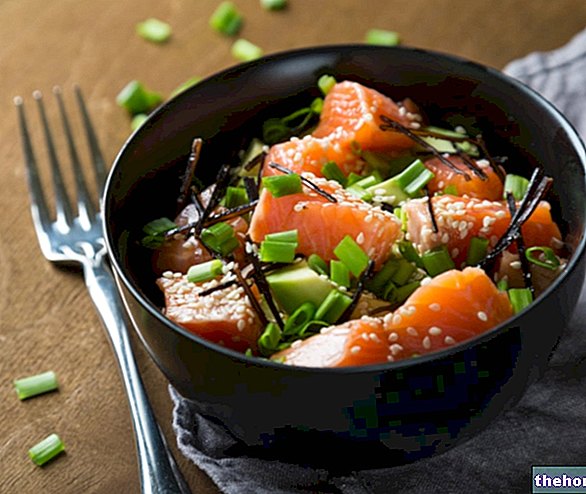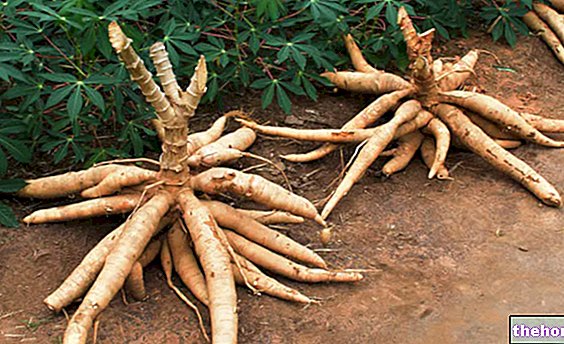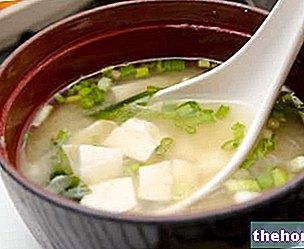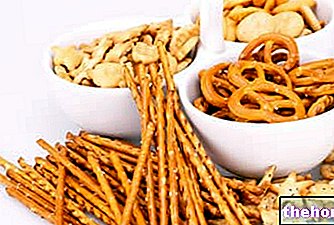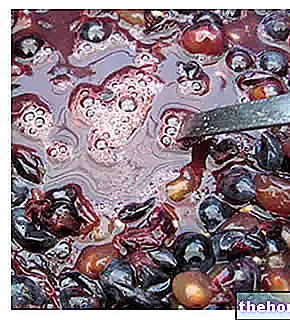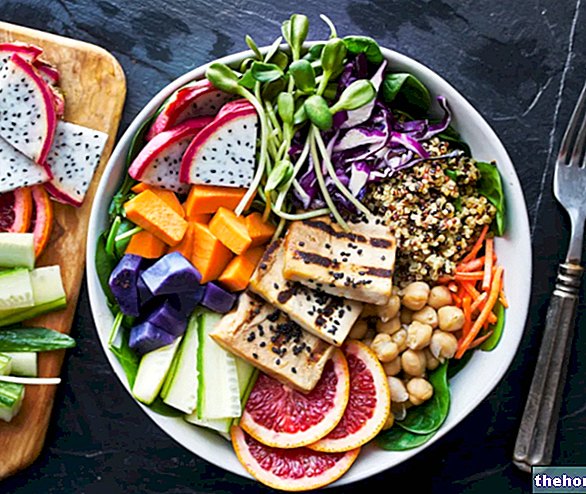This guide tackles the world of artisanal ice cream at 360 degrees, analyzing its theoretical and practical aspects to give the reader all the useful notions for producing quality ice cream, directly at home and without the use of expensive machinery.

GENERAL INDEX
- What is ice cream
- Components of the ice cream
- Air (in-depth analysis: the number of over-runs), Water and Solids
- Sugar in Ice Cream
- Fats in Ice Cream
- S.L.N.G (Non-Fat Milk Solids) - calculate the percentage of S.L.N.G
- Dry Ice Cream Residue (Other Solids) - carob flour in ice cream
- Types of Ice Cream:
- Ice creams and sorbets
- Cream, cream and fruit ice cream
- Preparation of the ice cream
- Balance of the mixture
- Pasteurization of the mixture
- Maturation of the mixture
- Creaming of ice cream (freezing or freezing)
- Firming of the ice cream
- Making homemade ice cream
- Calories of Gelato and Nutritional Aspects
- Video Recipes Ice Cream and Sorbets
What is ice cream
Ice cream is a complete, healthy and genuine food consisting of a suitably balanced mixture of sugars, fats, proteins, water and other ancillary substances.
Through continuous freezing and stirring, the mixture progressively incorporates air, thickens and takes shape, reaching the consistency and softness characteristic of ice cream.
While in the past the ancestor of ice cream could only be a simple mixture of fruit juices, crushed ice (or snow) and wine, modern ice cream takes on a much more delicate and complex connotation at the same time.
In fact, preparing a good ice cream is not as immediate as it might seem. After the careful balancing of the mixture, the ingredients can be transformed into a thick, spreadable and full-bodied cream only when some precise and distinct steps are fully respected. ), followed in turn by a cooling period (maturation) which should be maintained for at least 6-12 hours. Only later, it is possible to proceed with the creaming of the mixture (preparation of the ice cream), therefore with the realization of the final product.
Modern artisanal ice cream should not be considered a mere gluttony for children or a banal expedient to counteract the heat and heat of the summer: ice cream is a complete, genuine food with no contraindications.
Hazelnut Ice Cream
Problems with playing the video? Reload the video from youtube.
- Go to the Video Page
- Go to the Video Recipes Section
- Watch the video on youtube
Components of the ice cream
The raw materials that make up the ice cream are ingredients that come from the animal or vegetable world: milk, cream, eggs, juices, sugars and water are in fact subjected to specific thermal and chemical processes which, in the finished product (ice cream), appear indistinguishable in a "unique full-bodied mass, easy to apply and velvety at the same time.
Technically, we speak of "mixture" to indicate the set of raw materials, solid and liquid, which make up the ice cream. When you work at low temperatures (
Ice cream is made up of three main components: air, water and solids.
AIR
Air is an essential element capable of making ice cream soft. During the mechanical processing phase (called freezing or freezing of the mass), thousands of air microparticles naturally incorporate into the mixture, giving volume and softness to the finished product.
Erroneously, it is customary to think that the incorporation of air into an ice cream represents a "fraud" expedient; in reality, air is, in ice cream, a very important raw material just as it is in smoothies or whipped cream. It is an essential component like water and sugar in ice cream. When incorporated in a thoughtful and precise way, in fact, the air gives the ice cream excellent qualities: it not only allows to obtain an extremely pleasant and soft structure, but also gives the ice cream a warmer feeling in the mouth, less icy.
Deepening: the number of overruns
To know the quantity of air present in an ice cream, it is necessary to calculate the increase in volume of the mixture after its freezing, as well as the "overrun" of an ice cream.
For overrun s "means the ability of the mixture to incorporate air by simple mechanical stirring during the freezing phase. This ability is expressed as a percentage number. In other words, the" overrun "is the increase in volume that the mixture acquires inside the batch freezers during the entire freezing phase.
To calculate the overrun of a blend, the following formula must be applied:
Ex.
The weight of the "milk base" mixture is 1.5 Kg
The weight of the ice cream is 1.1 kg
The overrun is calculated as follows: (1.5-1.1) /1.1*100 = 36.4%
In general, the "overrun of a" milk-based "ice cream should oscillate between 30% and 40%, while a fruit-based ice cream should have an overrun of between 25% and 35%.
The overrun is indirectly proportional to the size of the ice crystals in the finished product: in other words, the higher the overrun, the smaller the size of the ice water crystals in the ice cream. It should be remembered, however, that an excessive overrun (> 35-40%) can favor the melting of the ice cream.
WATER
Water is another essential element of ice cream, indispensable for the solubilization of the other components of the mass.The water, which appears in the ice cream in the form of ice microcrystals, constitutes the humid part contained in each raw material and is the only element that can be effectively frozen, capable of solidifying the mass.
So, theoretically, an ice cream could consist of a simple mixture of water, sugar and any aromas: this would however involve the banal agglomeration of hundreds of thousands of ice crystals which, once stored in the freezer, would turn into an "inevitable ice mass. and solid.
To overcome this problem, it is important to balance the mixture by adding other ingredients (e.g. milk, fats, solids, etc.) to the water and sugar: in this way, the freezing point of the mixture drops from 0 ° C (temperature at which l "water freezes) at -6 ° C / -10 ° C.
The addition of "anhydrous" substances to the water - that is, non-freezing and moisture-free ingredients such as powdered milk and sugar - is an indispensable condition for obtaining a quality product and minimizing the formation of coarse ice crystals in ice cream.
SOLIDS
The solids present in the ice cream mixture can be classified into 4 distinct categories:
- sugars
- fat
- S.L.N.G (Non-Fat Milk Solids)
- Dry Residue (often referred to as "other solids").
The table shows the main ice cream solids: for each of them, the most important functions are summarized and the problems associated with their excess and deficiency in the formulation of the mixture are described.
- Sucrose
- Glucose syrup
- Dextrose
- Invert sugar
- Honey
- Maltose
- Maltitol and sorbitol
- Give sweetness and softness
- Promote the reduction of the freezing point
- Make the ice cream spatulable
- Too sweet and shiny ice cream
- Ice cream tending to melt quickly
- Insufficient overrun
- Frozen ice cream
- Little sweet ice cream
- Not easy to use with a spoon
- Animal fats (whole milk, cream, butter, egg yolks, etc.)
- Vegetable fats (margarine, vegetable cream, etc.)
- Make the ice cream creamy
- Reduce the "cold" effect
- Affect the melting point of the ice cream in the mouth
- Ice cream not easy to use (paradox)
- Insufficient overrun
- Too fatty ice cream
- Not quality ice cream
- Proteins
- Lactose
- Mineral salts
- Giving body and structure to the ice cream facilitating the overrun (they allow the incorporation of the air)
- Reduce the freezing point
- Reduce frozen water (proteins bind water)
- Insufficient overrun
- Perception of lumps in ice cream
- Sandy ice cream
- Ice cream devoid of body and structure
- Stabilizers (e.g. locust bean gum, guar gum)
- Emulsifiers
- Aromas
- Dietary fibers
- Inulin
- Prevent the formation of ice crystals
- Extend the conservation of the ice cream
- Optimize the structural characteristics of the ice cream
- Facilitate the emulsion of water and fat
- Allow the homogeneous distribution of the air
- Excessively compact ice cream
- Instability of the mixture
Other articles on "Homemade Ice Cream: The Complete Guide"
- Sugar in Ice Cream
- Fats in Ice Cream
- Artisan Ice Cream - Non-Fat Solids and Dry Residue
- Types of Ice Cream
- Preparation of the Gelato - Balancing the mixture
- Preparation of Ice Cream - Pasteurization, Maturation, Creaming
- Making homemade ice cream
- Calories of ice cream

